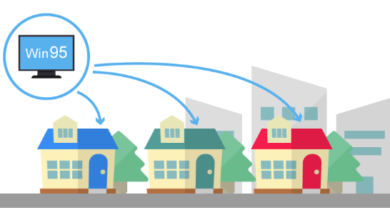Characteristics of Early Childhood Education classrooms

Much is said about the importance of innovating in educational methodologies, but there are still schools that teach in classrooms where the importance of space is not taken into account when promoting learning , creativity and student interaction.
We all work better when we find ourselves in a welcoming and pleasant space , but especially in the case of schools – where children spend a good part of their day – it is vital that the classrooms are comfortable, functional and adapted to their needs.
We tell you why space is so important in learning and what characteristics Early Childhood Education classrooms should have so that children learn better.
The importance of space when learning
Teachers and educators seek to excite, stimulate and capture the attention of their students with fun activities that arouse interest and promote learning. But for this, they must also be able to rely on spaces that help them achieve these goals , making it easier for children to enjoy while they learn and feel motivated.
And it is that the evolution towards a more flexible teaching also involves adapting the spaces and classrooms where children learn, interact, play and develop their activity.
In this sense, it is important that schools have open, versatile and functional classrooms that facilitate the work of students and adapt at all times to their needs. In addition, the spaces must be equipped with flexible furniture that allows freedom, movement, comfort and autonomy of the students.
Although there are common characteristics that all classrooms should have regardless of the educational stage of the students who occupy them, the experts from the British School of Valencia offer us more precious details about what classrooms should be like in the Infant stage:
Functional furniture suitable for the little ones
It is essential that the furniture is perfectly adapted to the age and size of the children , as well as the type of work they are going to do. In this sense, the furniture must be functional and versatile to adapt at all times to classroom activities.
On the other hand, the tables and chairs where the children sit must be able to move easily to favor their autonomy, the shelves distributed in the classroom must have easy access so that the children can reach the books, toys or materials without difficulty, and There must be specific furniture for which students develop their creativity.
And finally, it is also important that the Infant classrooms have their own toilets so that the children do not have to move when they need to go to the bathroom, and likewise facilitate the work of the teachers.
Distribution designed to socialize
The Early Childhood Education stage is essential for the development of social skills in the child . From the age of two, children begin to practice symbolic play by imitating what is happening around them, and around the age of three they leave the game in parallel to start playing and cooperating with other classmates.
These changes in their development require classrooms with flexible spaces , where learning areas are combined with play, rest, reading and even food areas.
custom spaces
When the classes are decorated by the students themselves with their drawings, photographs, works, memories of excursions or things that they learn throughout the course, the classrooms become completely personalized spaces .
Having this type of decoration makes children feel more integrated and happy to have participated in the creation of a joint space and that also has part of the personality of all the participating children.
Promote multisensory learning
Practical and multisensory learning is very positive for the correct development of children’s cognitive abilities , as well as offering them the opportunity to experiment, learn and discover details of the world around them in a different and fun way.
From the classroom, it is possible to encourage this type of learning by placing handicraft materials within the child’s reach , as well as other manipulative and educational elements that help them to continue learning while developing their senses.
Allow the development of creativity without limits
And very much in line with all of the above, Infant classrooms must be equipped with large spaces where students can put their creativity to the test without limits . And we already know that children are creative geniuses , but they need space and freedom to be able to capture everything they have inside.


